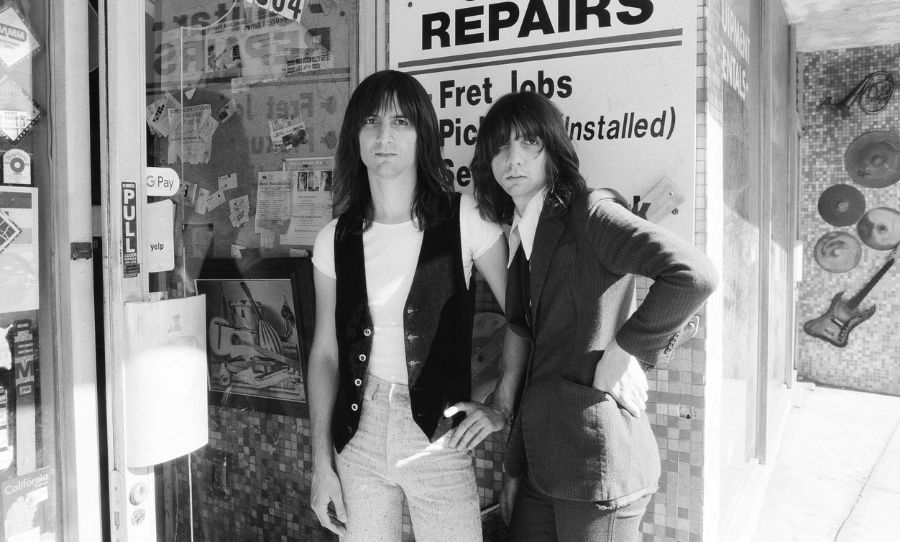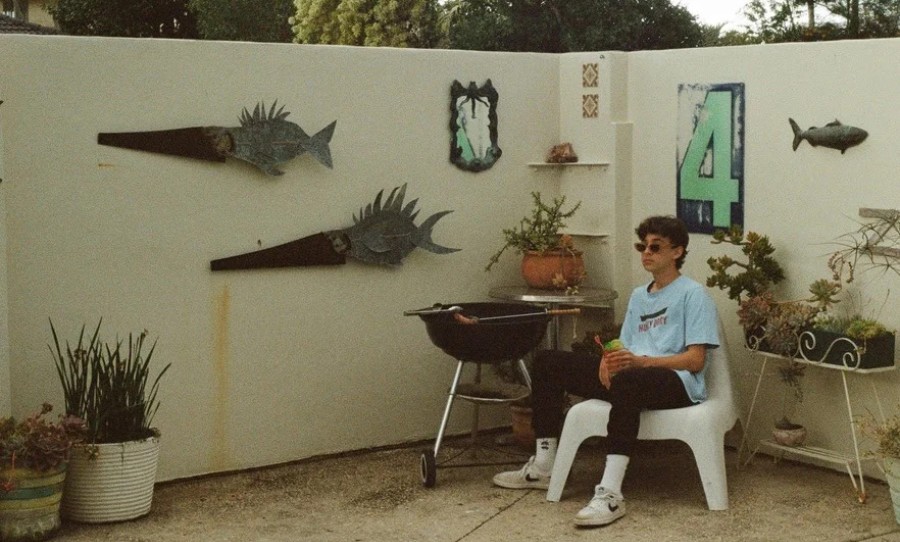For a ’90s alt-rock/grunge band, Mellon Collie and the Infinite Sadness was an albeit pompous undertaking, but it sure as hell paid off.
Mellon Collie and the Infinite Sadness is the third outing for the Smashing Pumpkins, a dense double-disc concept album centred on themes of mortal sorrow. Coming from a ‘90s alt-rock/grunge band, the album was a more pompous and musically ambitious undertaking than it had any right to be. However, it was this brazenness that paid off, scoring a #1 on Billboard, a Diamond certification from the RIAA, seven Grammy nominations, and enduring acclaim for being one of the magnum opuses of modern rock.
The whole thing was achieved in over 10 months of blood and sweat that saw the band working 12 to 16 hour days regularly – and 20 hours in the last few days to meet the deadline. Onboard for the madness was Alan Moulder – who mixed the prior release Siamese Dream – and the prolific Mark “Flood” Ellis (producer for Depeche Mode, U2, PJ Harvey), who was specially invited by frontman Billy Corgan to help steer the Pumpkins into new and uncharted territory.

A New and Improved Pumpkin-Land
Mere weeks after headlining Lollapalooza in 1994, Corgan began writing material for what would eventually shape up to be Mellon Collie and the Infinite Sadness. Unlike their sophomore success, 1993’s Siamese Dream, on which Corgan monopolised songwriting as well as all bass and guitar parts, Mellon Collie was consciously more of a group effort.
The band came together to start the album in March 1995 in their Chicago rehearsal space, charmingly named ‘Pumpkinland’. In the name of newness and improvement, the Pumpkins decided to forego old friend Butch Vig, who produced both their previous records, in favour of Flood, who pushed the band to upheave their usual working style.
Rather than moving into the studio to record, the group instead began recording in April in their rehearsal space, which produced demo rhythm tracks that would shape much of the album. Flood also ensured that tracking sessions were more efficient than usual. Multiple recording rooms were used at a time, with Flood and Corgan doing their thing in the ‘A room’ and Moulder with Wretzky and Iha in ‘B’. Roughly two-thirds of Mellon Collie was recorded this way before the group finally moved to the Chicago Recording Company studios for overdubbing and post-production editing.
Perhaps Flood’s biggest impact on the Pumpkins was encouraging them to set aside time each day during recording sessions simply to jam together, as Corgan told Guitar World: “Working like that kept the whole process very interesting – kept it from becoming a grind.”
State-of-the-Art Systems
When recording sessions for Mellon Collie and the Infinite Sadness began, Flood had one overarching goal – to capture the Pumpkins’ live sound in the studio. As Corgan has told it: “Flood felt like the band he would see live wasn’t really captured on record. So a lot of Mellon Collie was tracked by the band at deafening volumes. I mean deafening. There was so much SPL in the room that it was physically uncomfortable. Your ears, your emotional resistance, would wear down.”
To accomplish this thunderous lively sound, a mix of analog and digital were utilised. Towards the former, Flood wielded an Otari MTR-90 MKII multitrack recorder with an MCI console to capture Corgan’s efforts in ‘Room A’. Meanwhile, Wretzky and Iha’s contributions in ‘B’ were obtained using a combination of TASCAM DA-88 digital recorders, two-inch tape, and Pro Tools.
Elsewhere, analog Studer A820s also came into play. Additionally, Flood was a big fan of Dolby SR and made the most of it for the record. He particularly used a tape speed of 15 ips in service of low end.
“Apart from the obvious benefits of Dolby, if you tweak the Dolby unit really, really well, it’s a bit like adding an Aphex and a dbx sub-harmonic bass enhancer on every channel,” Flood explained.
“Also, the way that tape changes the sound or modifies the sound, 15 ips is technically not correct, but I find it to be so musical, particularly on the bottom end. This was very much a conscious decision, and very much a part of the album’s sound.”
After the bloody intensity of recording sessions, cool and calculated editing went down at LA’s Village Recorder. Pro Tools was the main player for not only guitar overdubs but also for a novel assembly of electronic sampling and, in general, to make the many disparate parts hang together. The best showcase of this can be heard on Porcelina of the Vast Oceans; multiple song sections were recorded at different times with different mic setups and then eventually stitched together into a grandiose whole.
The Hammer of the Gods
Mellon Collie and the Infinite Sadness paved new ground for the Pumpkins, especially in its guitar production, which veers away from the excessive layering of previous albums or “guitar overkill,” as put by guitarist Iha. Although some album cuts such as Thru the Eyes of Ruby, with its approximately 70 guitar tracks, hearken back to older days, most guitar parts on the record were double-tracked merely once. Moreover, around this time Corgan had a change in priorities in regards to his guitar-playing, telling Guitar Player Magazine: “We’ve hit a wall on the guitar. I still want to be excited about it, but a ripping lead just doesn’t do it for me like it used to. I’m thinking much more in terms of the song than the guitar technique… I’m not interested in impressing anybody with technical virtuosity. I want to hear power. I want the fucking hammer of the gods.”
Such godly hammering is displayed best in Corgan’s guitar solo in Fuck You, which he reportedly achieved by standing one foot away from the amp and then turning it up so loud that he was forced to compete with the feedback — “I played until my fingers saw blood. You can’t play a weak guitar solo in such a propulsive song. It’s got to be attack-style.”
In a novel development, Iha also was granted opportunities to shine, with solos between him and Corgan being divided half-and-half on the record. An interesting showcase for Iha is the ‘cyber solo’ on Love, which he achieved through hours of work with the Even time H3000 harmoniser. Meanwhile, Porcelina of the Vast Oceans shows off the contrast between both guitarists, with Corgan’s self-proclaimed “full-ranged and lyrical” style coming together with Iha’s “more singular and harder” approach. Gear-wise, Corgan continued to use Marshall 1960A cabs, but also took up a Mesa Boogie Strategy 500 Power amp, Marshall JMP-1 pre-amp for distortion, and Alesis 3630 compressor for extra gain.
This was, according to Corgan, the combo of his dreams: “I’ve got the balance I’ve always wanted: all that low-end brute force with the clarity on top, which is why this record rocks a lot harder than Siamese Dream. That record had a humongous sound, but we lost the attack, and that’s something we wanted to make sure we achieved this time. I’ve got it now, and there’s no shutting me down.”
Drum Rolls, Please
Thanks to the restraint practised with the record’s guitar tracking, the Pumpkins’ percussive section was afforded more space in songs for drummer Jimmy Chamberlin to thrive. His setup is one he used well into the ‘00s – a Yamaha Maple Custom kit with Zildjian A Custom crashes. Chamberlin’s big band background had an impact insofar as his drumming was centred around the snare sound rather than the kick, and for that he often depended on none other than the Ludwig Supraphonic 5 ½ x 14 inch – arguably the star of Tonight, Tonight. As for mics, Chamberlin liked AKG C 414s for an “upfront and aggressive” presence, Shure SM98s for less aggressive times, and Shure 12As on the bigger drums.
Chamberlin preferred for his 16×22 inch kick and snare to run through the wedge speakers to his back, a choice that Flood could support thanks to his wealth of studio experience. As he told E-Musician, “… if you’ve got a kit that’s lacking a bit of bottom end, you pump the kick and the snare through the wedges and you start to tweak them to get extra weight.”
Carefully Picked Over-Production
Flood’s presence in the studio also saw an improvement in Corgan’s vocals. To pick up Corgan’s voice, the much-revered Shure SM58 was employed, along with open speakers. Surprisingly, Flood noted that Corgan’s pitch was considerably better without headphones in play. Once the recording was finished, Flood and Corgan carried out a rigorous evaluation of the copious vocal takes. These were assessed on basis of rhythmic accuracy, melodic power, and delivery, whereby the best of the bunch were picked out and edited together to make a composite master. In post-production, Flood wasn’t stingy with either effects or layering of tracks, as demonstrated again by the likes of Porcelina of the Vast Oceans.
A New Set of Tools
In the name of experimentation, Mellon Collie boasts an unprecedented diversity in instrumentation, from the piano in the opening title track, a live orchestra in Tonight, Tonight, a pedal lap steel guitar in Take Me Down (performed by session musician Greg Leisz), tremolo-heavy E-bows in Porcelina, as well as salt shakers even scissors in Cupid de Locke. The band also embraced electronic samples for the first time, making use of Pro Tool’s synths, drum loops, and even digitised orchestral arrangements to supplement the songs. Those beautifully unnerving string sounds in Beautiful were specially selected by Corgan, who then jammed along in MIDI.
“If you do something as ambitious as a double record and it doesn’t sell, it will be viewed as an artistic failure. And I will not have that hanging around my neck,” Corgan melodramatically proclaimed in a 1995 edition of the Chicago Tribune. “If it’s considered a failure, it’s time for this band to be gone.”
He needn’t have worried, as Mellon Collie and the Infinite Sadness only cemented the Smashing Pumpkins, both as a voice for maladjusted youth and as the alternative rock pioneers they were.



